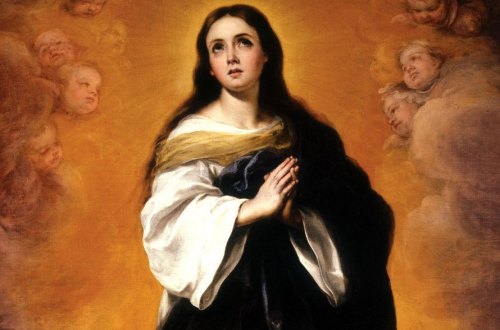CNA Newsroom, Dec 7, 2022 / 14:00 pm
While the dogma of the Immaculate Conception would not be proclaimed until 1854, the Church in Spain has long venerated Our Lady’s Immaculate Conception.
In 1585 a miracle attributed to the Immaculate Conception allowed the Spanish troops to win the Battle of Empel in Holland.
As part of the Holy Roman Empire’s House of Habsburg in the 16th century, Spain governed what was known as the Spanish Netherlands. However following the Protestant Reformation, the Protestant provinces revolted against Spanish rule, sparking a prolonged conflict for control of the region known as the Eighty Years’ War.
On the night of December 7-8, 1585, the situation of the troops of Emperor Philip II of Spain looked desperate.
The Tercio Viejo de Zamora infantry regiment commanded by Francisco Arias de Bobadilla was trapped by enemy forces at the Empel dike off the island of Bomel. The morale of his troops was low due to hunger and cold.
Bobadilla called his captains and ordered them to pray with faith so that God would deliver them from the dreadful fate that awaited them.
Soon, a soldier who was trying to dig a hole to take refuge from the wind and cold uncovered a wooden tablet with the image of the Immaculate Conception painted on it. Immediately, the image of Our Lady was taken in a procession to a nearby church.
After this act of devotion of the troops, a strange, miraculous event occurred: the surface of the waters froze almost in an instant. The Spanish troops were able to walk on foot over the ice and defeat the rebellious Dutch Protestant forces.
The same day, the Immaculate Conception was proclaimed patroness of the infantry of Flanders and Italy. The Virgin’s patronage of all the Spanish infantry, the oldest in the world, did not become official until 1892 by a Royal Order of the regent María Cristina.
The dogma and Spain
On Dec. 8, 1854, Pope Pius IX proclaimed the dogma of the Immaculate Conception of the Virgin Mary through the bull Ineffabilis Deus, declaring that “the doctrine which holds that the most Blessed Virgin Mary, in the first instance of her conception, by a singular grace and privilege granted by Almighty God, in view of the merits of Jesus Christ, the Savior of the human race, was preserved free from all stain of original sin, is a doctrine revealed by God and therefore to be believed firmly and constantly by all the faithful.”
But long before that, Spain was especially noted for its defense of the Immaculate Conception of Mary.
The most remote precedent is found with the Visigothic monarch Wamba, who distinguished himself at the XI Council of Toledo in 675 as “defender of the Immaculate Conception of Mary.”
King Felipe IV, who reigned from 1621 to 1640, urged Pope Gregory XV to proclaim the dogma, though without success.
In 1761, King Carlos III established the “universal patronage of Our Lady of the Immaculate Conception in all the Kingdoms of Spain and the Indies.”
The Order of Carlos III has been the highest civil decoration awarded in Spain since 1771. Its emblem is an image of the Immaculate Virgin.
The statue located in the Spanish Plaza in Rome was placed there in view of the defense of this Marian dogma by the Spanish through the centuries.

